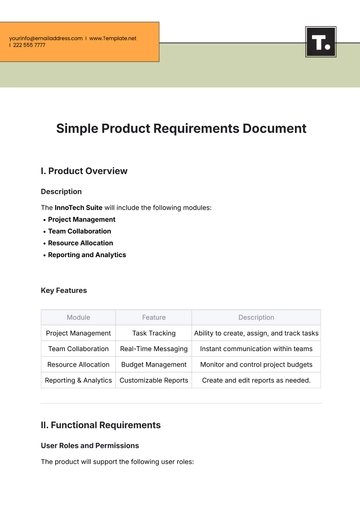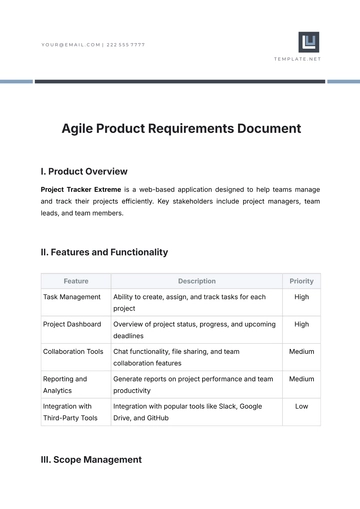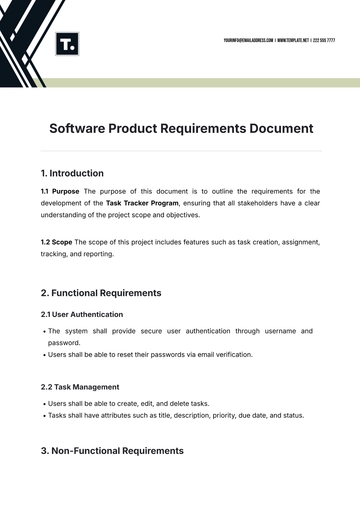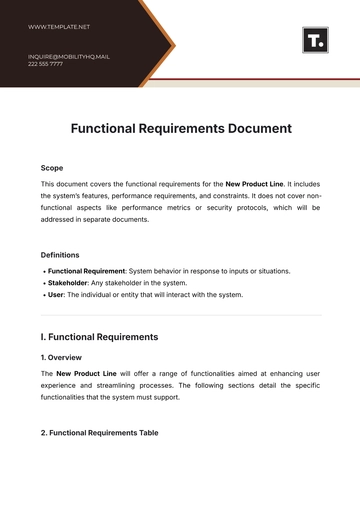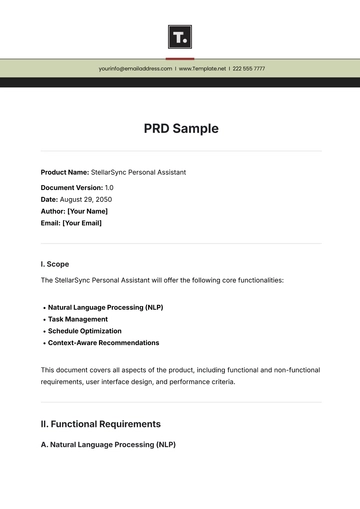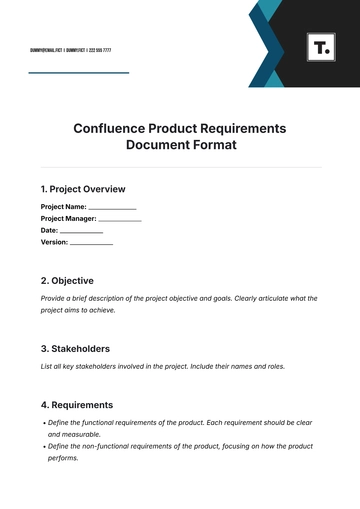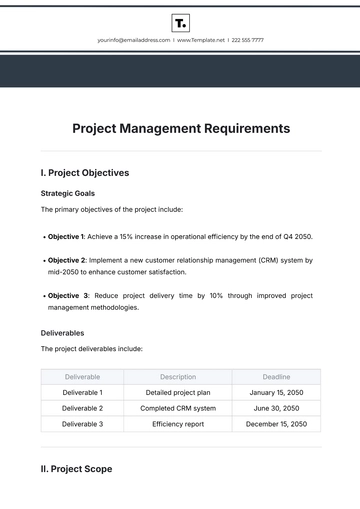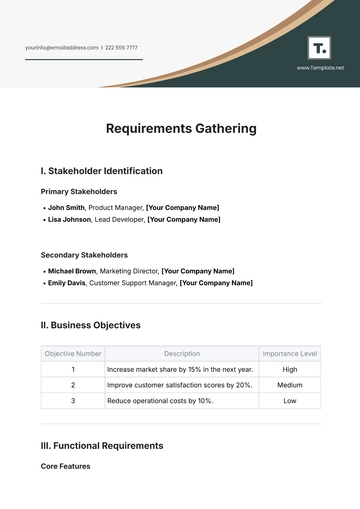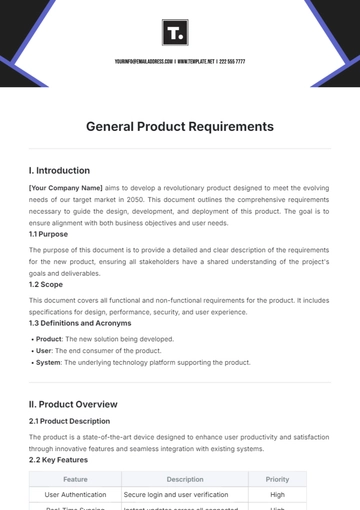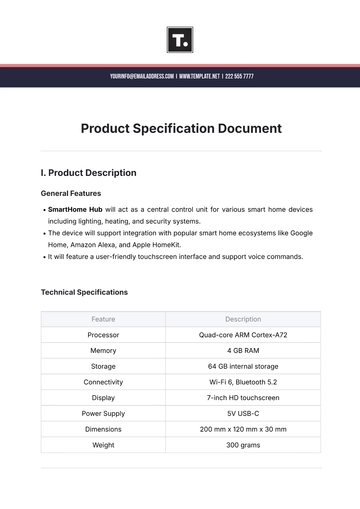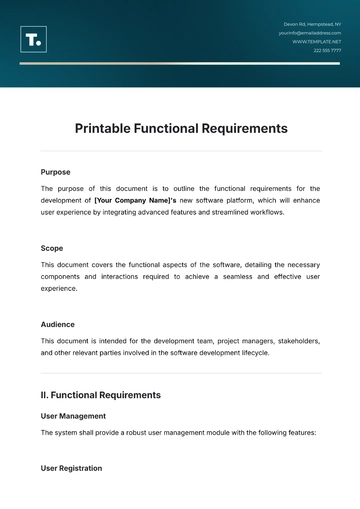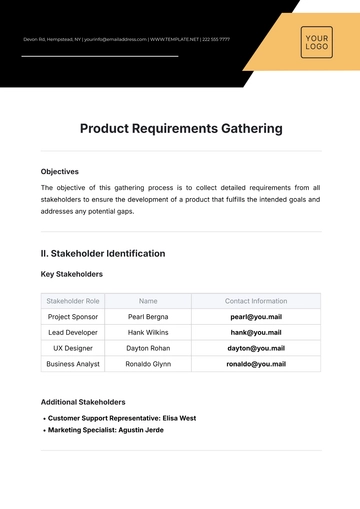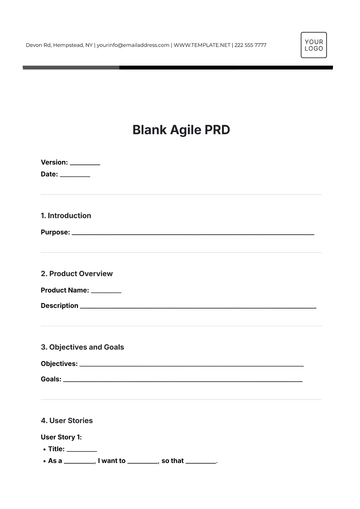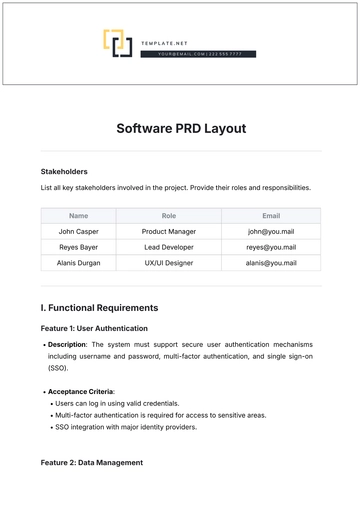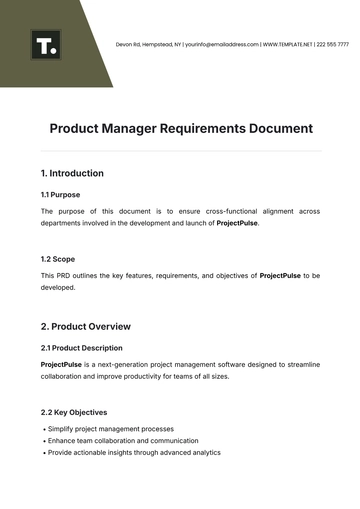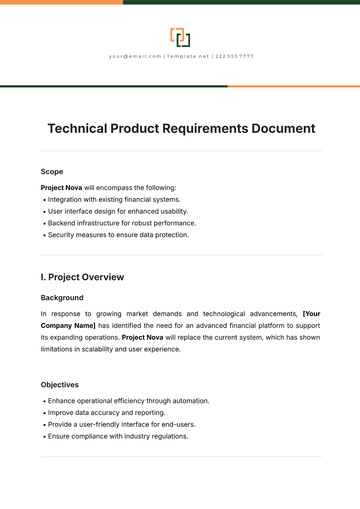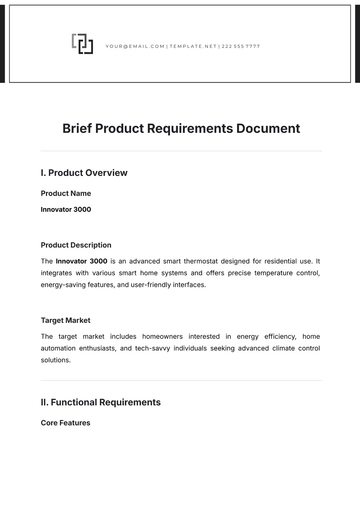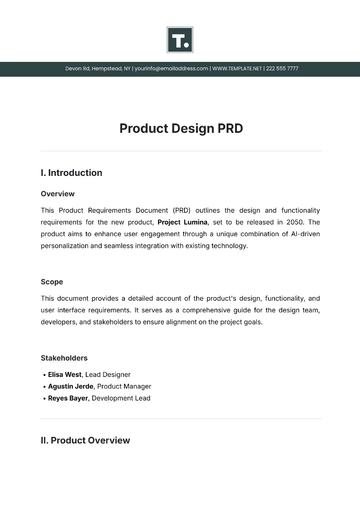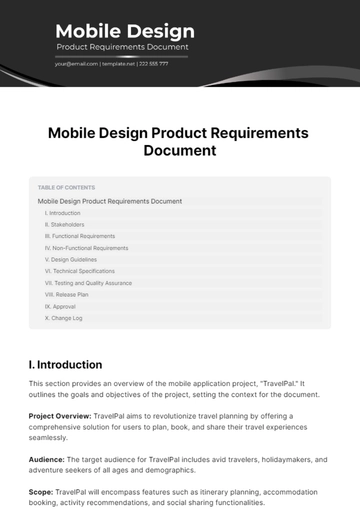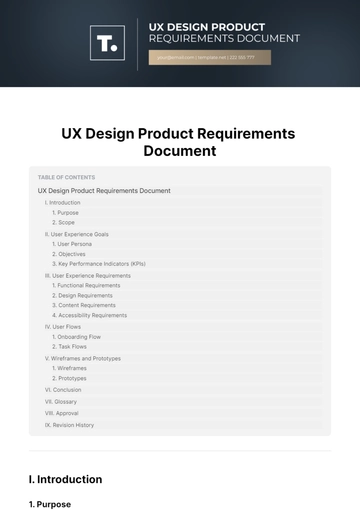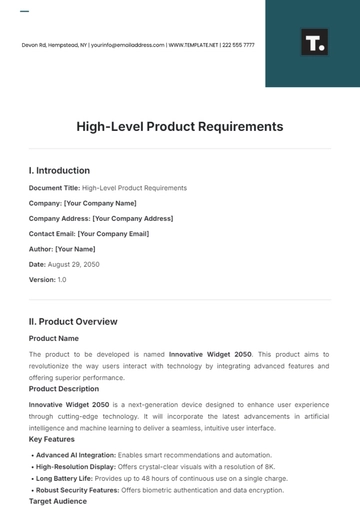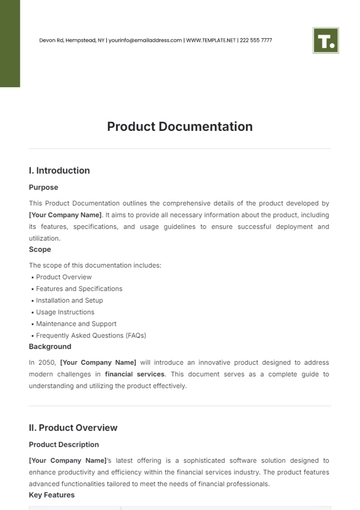Free Product Release Requirements Document
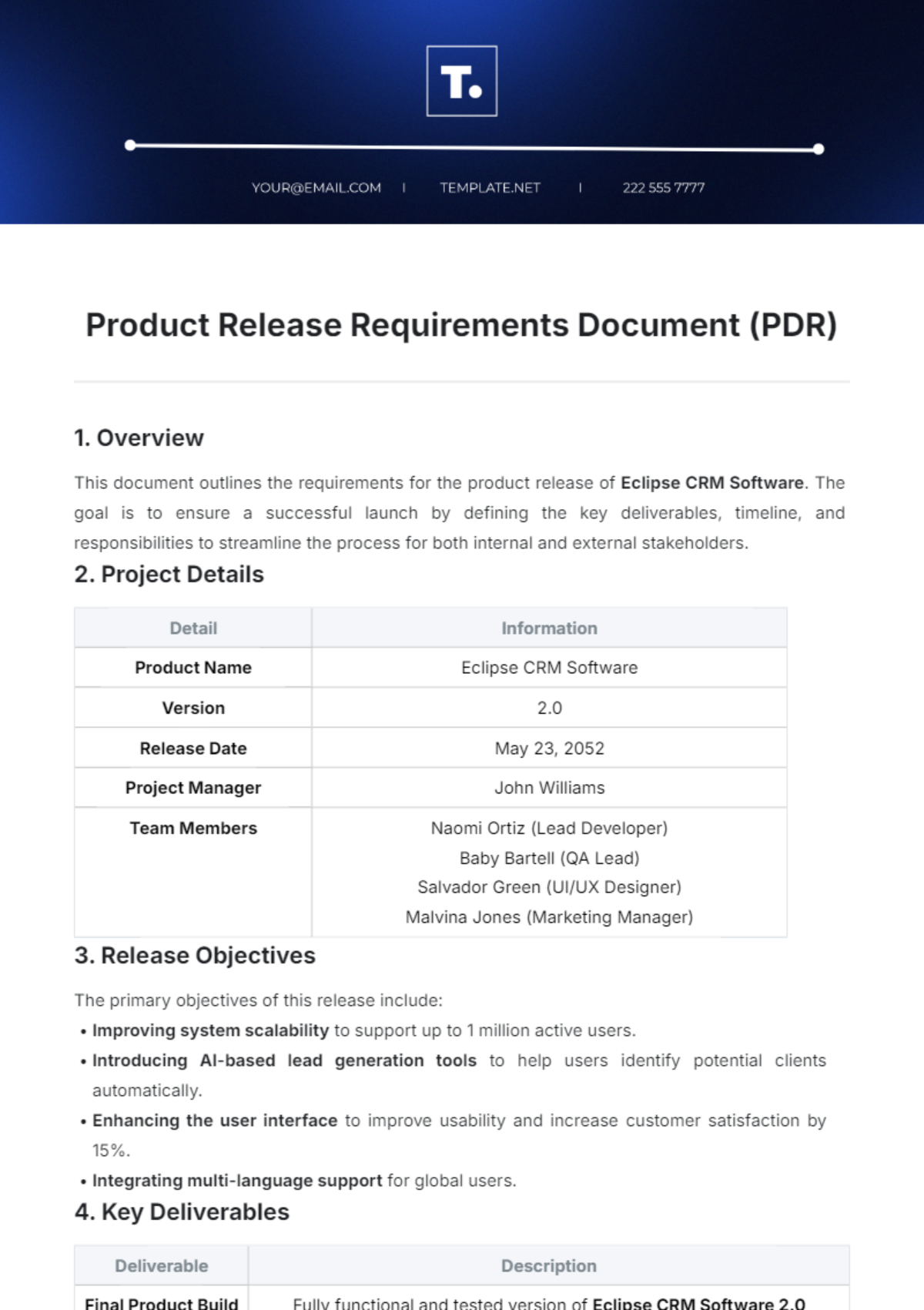
1. Overview
This document outlines the requirements for the product release of Eclipse CRM Software. The goal is to ensure a successful launch by defining the key deliverables, timeline, and responsibilities to streamline the process for both internal and external stakeholders.
2. Project Details
Detail | Information |
|---|---|
Product Name | Eclipse CRM Software |
Version | 2.0 |
Release Date | May 23, 2052 |
Project Manager | John Williams |
Team Members | Naomi Ortiz (Lead Developer) Baby Bartell (QA Lead) Salvador Green (UI/UX Designer) Malvina Jones (Marketing Manager) |
3. Release Objectives
The primary objectives of this release include:
Improving system scalability to support up to 1 million active users.
Introducing AI-based lead generation tools to help users identify potential clients automatically.
Enhancing the user interface to improve usability and increase customer satisfaction by 15%.
Integrating multi-language support for global users.
4. Key Deliverables
Deliverable | Description |
|---|---|
Final Product Build | Fully functional and tested version of Eclipse CRM Software 2.0 |
User Documentation | Comprehensive setup guides and tutorials for maximizing the software’s features |
Marketing Materials | Press releases, blog posts, social media content, and demo videos |
Release Notes | Details on new features, bug fixes, and known issues to be shared with users |
5. Functional Requirements
Feature 1: AI-Based Lead Generation – Automates lead scoring, qualification, and management using machine learning algorithms.
Feature 2: Enhanced Dashboard – Provides real-time insights into customer behavior, sales metrics, and team performance.
Feature 3: Customizable Reports – Allows users to generate personalized reports based on KPIs, sales data, and customer interaction history.
Feature 4: Multi-Language Support – Offers translation in 10+ languages, including French, Spanish, and Mandarin.
6. Non-Functional Requirements
Requirement | Description |
|---|---|
Performance | The System must process transactions and data updates in under 2 seconds at peak usage |
Security | All user data must be encrypted using AES-256 encryption standards |
Compliance | The software must comply with GDPR for data protection and privacy |
7. Testing and Quality Assurance
Testing Environment: A staging environment identical to production will be set up to conduct performance, security, and usability testing.
QA Team: The QA team led by Baby Bartell will ensure all testing is completed, and no critical bugs are present.
Test Plan: Includes functional testing, regression testing, and user acceptance testing (UAT).
Test | Completion Date |
|---|---|
Unit Testing | May 1, 2052 |
Performance Testing | May 5, 2052 |
UAT | May 12, 2052 |
8. Risk Management
Risk | Impact | Mitigation Plan |
|---|---|---|
Delayed Completion of Testing | High | Allocate additional testing resources from the development team if testing exceeds schedule |
Server Downtime During Go-Live | Critical | Implement 48-hour monitoring post-release and have IT resources on standby |
Non-Compliance with Data Protection | Severe | Conduct a pre-launch compliance audit by external consultants |
9. Release Plan
Deployment Strategy:
Phased Rollout: Start with a 20% user deployment, followed by a full rollout if no critical issues are reported.
Communication: Notify internal teams via email and external users through newsletters and in-app notifications.
Downtime Plan: Scheduled downtime on May 23, 2052, from 12:00 AM to 1:00 AM UTC.
Backup Plan: Perform a full data backup before deployment to prevent data loss.
Plan | Details |
|---|---|
Go-Live Date | May 23, 2052 |
Rollback Plan | The Previous version (v1.9.5) will be restored within 2 hours if significant issues arise |
10. Communication Plan
Audience | Communication Method | Timeline |
|---|---|---|
Internal Team | Slack updates, weekly progress meetings | Weekly until May 23, 2052 |
External Users | Marketing emails, product demo webinar | May 16-24, 2052 |
Press | Press releases | May 22, 2052 |
11. Approval
Approved by: [Your Name] (Project Manager)
Approval Date: May 10, 2052
This document will be updated regularly to reflect any changes leading up to the release of Eclipse CRM Software 2.0.
- 100% Customizable, free editor
- Access 1 Million+ Templates, photo’s & graphics
- Download or share as a template
- Click and replace photos, graphics, text, backgrounds
- Resize, crop, AI write & more
- Access advanced editor
Introducing the Product Release Requirements Document Template from Template.net. Crafted with precision, it's an editable and customizable solution designed to streamline your product release process. Harness its power to detail specifications effortlessly, thanks to its AI Editable Tool. Simplify complexities, enhance collaboration, and expedite launches with this indispensable resource. Elevate your product management game today.

